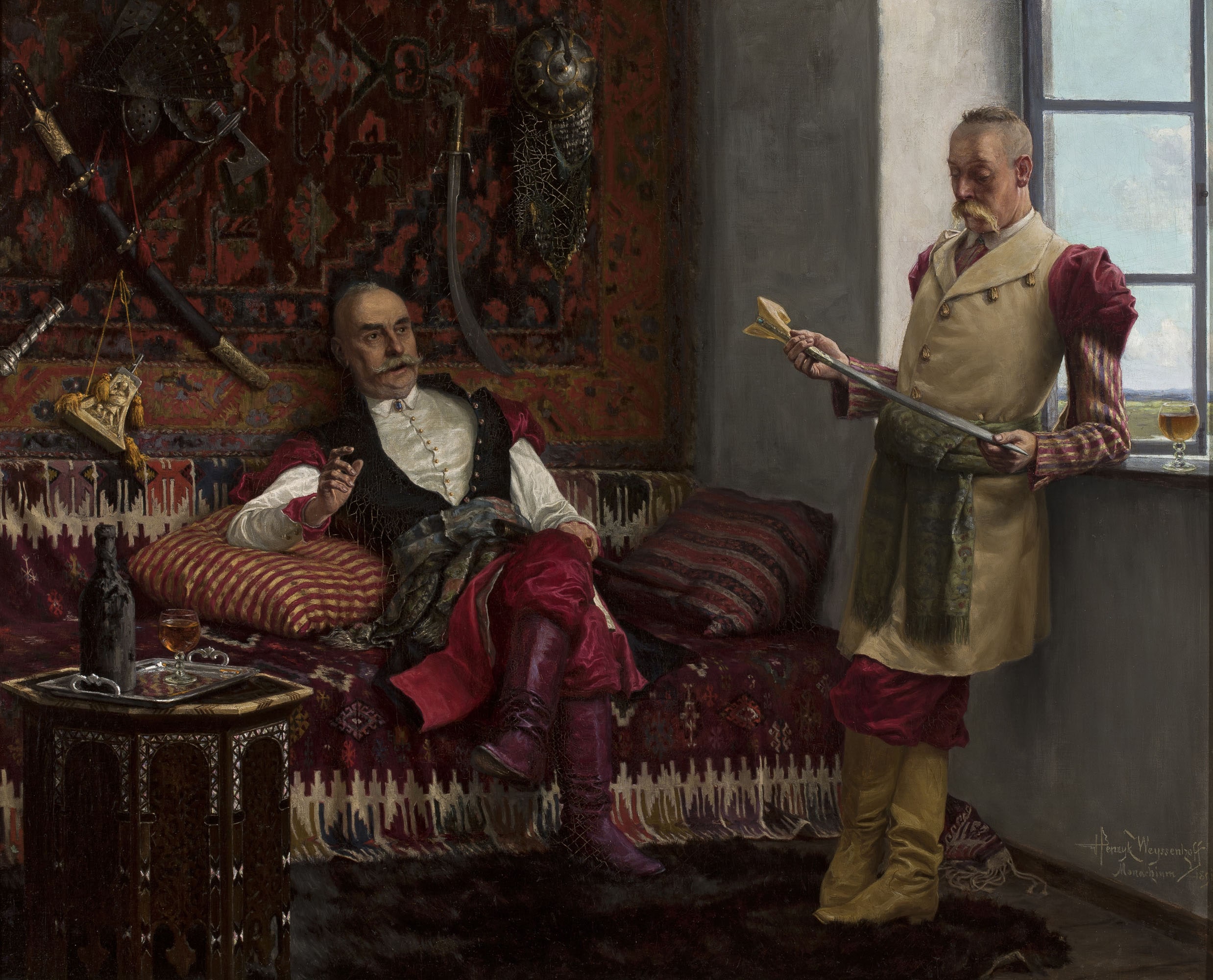26 December 2014

History of a Khanjar”, Henryk Weyssenhoff, 1891. Oil on canvas, 73 X 90 cm.
Henryk Weyssenhoff, author of landscapes, prints, and illustrations, devoted much of his creative energies to realistic vistas of Belorussia, Lithuania, and Samogitia. A descendant of an ancient noble family which moved east to the newly Polonised Inflanty in the 17th century, the young Henryk was raised to cherish Polish national traditions. His father, putting his words into action, joined the January Insurrection against Russian rule and, following its failure, was exiled to Kungur in Siberia, where he was joined by his wife and sons. Following study and work in a number of European cities, the artist settled at his mother’s family estate at Russakowicze in 1909, establishing an artistic centre of sorts –a studio combined with holdings of memorabilia, prints, furniture, textiles, and books. This family museum, known as the Lamus, may well have inspired the artist in his work on History of a Khanjar, painted in Munich in 1891.
History of a Khanjar is a genre scene in which two Polish nobles clad in 18th century kontush engrossed in conversation in a chamber richly furnished with Oriental objects. The younger man is contemplating a yatağan –a type of Turkish battle knife with a single-edged, delicately curved blade erroneously referred to as a kindza or handjar (the former would be a type of dagger, shorter and with a double-edged blade). Worth noting is the hilt of the weapon –without a crossguard and with a typical bifurcated pommel which, to some, evokes lepidopterous connotations. An older man is seated upon a sofa, leaning against Turkish yastik pillows, recounting with gusto the tale of this relatively rare weapon. Standing upon a low, octagonal kursi table decorated with bone intarsio is a moss-covered bottle with a honey-coloured liquid. The wall above the sofa is decorated with an eastern rug and, hanging upon it, with trophies of war: a sheathed sabre crossed with a battle axe with a hook (nadziak, popular among Polish knights), a powder flask, a “winged” helmet of a design used by hussars, a Turkish helmet, and a curved killidh sabre. One possible interpretation would be that these are family heirlooms from the Battle of Vienna, with military accessories of the victors displayed along with those taken from the vanquished. The whole is immaculately rendered, testifying to Weyssenhoff’s skill as a painter. The artist seems to have approached this composition, rendered to the finest detail, as a stately still life, an expression of nostalgia for times gone by.

Over the years of 1864 through 1876, Stanisław Chlebowski served Sultan Abdülaziz in Istanbul as his court painter. As it was, Abdülaziz disposed of considerable artistic talents of his own, and he actively involved himself in Chlebowski’s creative process, suggesting ideas for compositions –such as ballistic pieces praising the victories of Turkish arms.
Tuesday - Saturday 10:00 - 19:00
Friday 10:00 - 22:00
Sunday 12:00 - 18:00
The museum is closed on Mondays.
On Wednesdays, the students can
visit the museum free of admission.
Full ticket: 300 TL
Discounted: 150 TL
Groups: 200 TL (minimum 10 people)